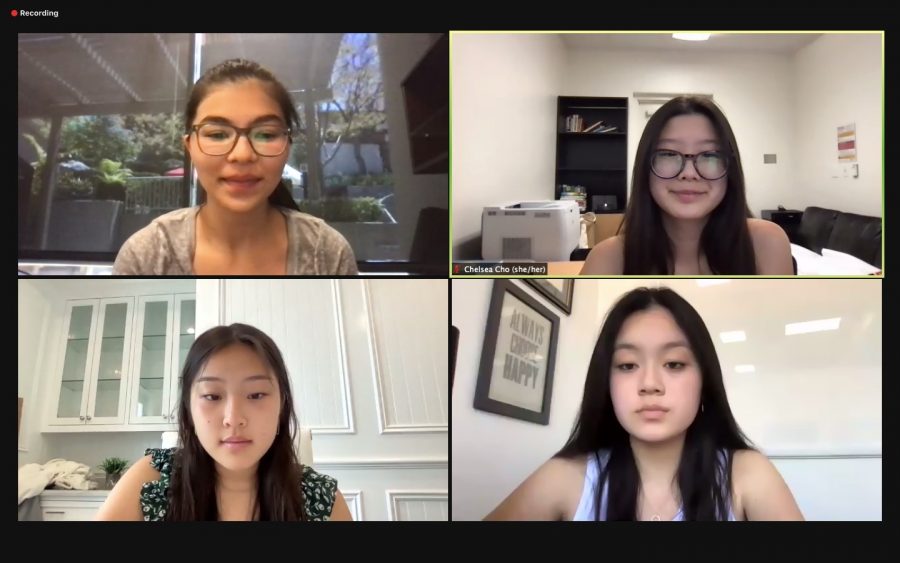ASiA celebrates Asian Pacific American Heritage Month at Community Flex Time
ASiA Club Leaders present on APAH month and introduce video presentations.
May 6, 2021
The Asian Students in Action (ASiA) Club led an all-community celebration of Asian Pacific American Heritage (APAH) Month at Community Flex Time May 4.
Club leaders Mia Shelton ’21, Chelsea Cho ’21, Iris Huang ’21 and Kimberly Wang ’21 began the webinar by defining APAH Month as a celebration of all the different Asian American cultures. Wang said Asian American people can have very different heritages.
“This year, ASiA has been focused on asking ourselves questions about our identity as Asian Americans, and also building a community of pride, empathy and celebration for our similarities and our differences,” Wang said. “For many, our culture is a blend of so many different factors that differentiate each person’s perception of their own heritage.”
The event featured discussion led by ASiA leaders followed by short videos
In a discussion about Asian American struggles throughout United States history, Shelton and Cho addressed both the personal connections that many Asian Americans have to their history and the widespread racism they face. Cho said the aim of APAH Month is to encourage others to shift their perspective on Asian American people.
“Advocating for Asian Americans isn’t just asking people to not kill our elderly,” Cho said. “It’s about challenging how you and the people around you enforce stereotypes about Asian Americans and exclude members of the AAPI from spaces controlled by dominant white American cultures.”
Shelton said the rise in consumption of Asian culture, such as beauty products, food and clothing, has not included a proportional boost in empathy for Asian communities.
“Our culture and even our bodies are commodified and consumed,” Shelton said. “Just because you see Asian culture around you doesn’t mean that you know it, and especially doesn’t mean that you own it. Please try to learn and dig deeper than just enjoying our food or laughing at not being able to pronounce the words on the menu.”
Videos featured students and faculty
ASiA then presented multiple videos, which highlighted Asian American culture and featured student perspectives on being Asian American. Ben Kim ’21 said he remembers coming to understand his Asian American identity on his first day of school.
“I was on the playground, playing soccer with other kids, and another kid came up to me, and trying to be nice, he asked, ‘Hey, are you Chinese? Japanese?’,” Kim said. “Since I wasn’t either, it made me realize that my identity really was Korean-American.”































